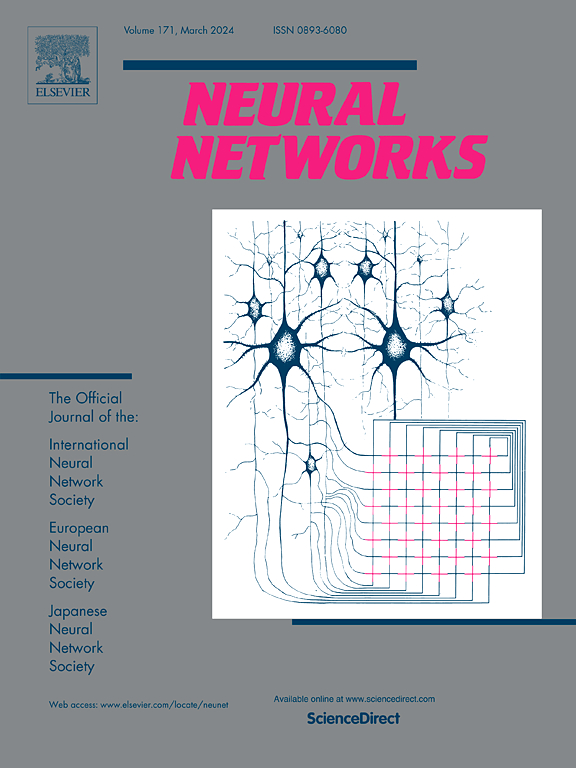利用 GABA 调制 STDP 稳定随机尖峰网络中的序列学习
IF 6.3
1区 计算机科学
Q1 COMPUTER SCIENCE, ARTIFICIAL INTELLIGENCE
引用次数: 0
摘要
皮层网络能够无监督学习和自发重放复杂的时间序列。赋予人工尖峰神经网络类似的学习能力仍然是一个挑战。特别是,不同的可塑性规则在学习过程中如何促进学习和网络稳定性的维持,还没有得到解决。在这里,我们介绍了一种受生物学启发的gaba调制的Spike time - dependent Plasticity (GMS),并证明了它能够在循环Spike神经网络中稳定地学习复杂的时间序列,包括自然语言。基于生物学发现,GMS利用对兴奋性细胞的瞬时抑制水平来调节兴奋性细胞之间连接的Spike time - dependent Plasticity (STDP)的大小和信号。特别是,网络中的高水平抑制会导致兴奋性到兴奋性连接的抑制。我们在几个基于字符和标记的文本输入以及视觉输入序列的序列学习实验中证明了该机制的有效性。我们证明GMS在学习和自发重播期间保持稳定性,并允许网络形成其输入序列的聚类分层表示。总的来说,我们提供了一个受生物学启发的模型,用于循环尖峰神经网络中复杂序列的无监督学习。本文章由计算机程序翻译,如有差异,请以英文原文为准。
Stabilizing sequence learning in stochastic spiking networks with GABA-Modulated STDP
Cortical networks are capable of unsupervised learning and spontaneous replay of complex temporal sequences. Endowing artificial spiking neural networks with similar learning abilities remains a challenge. In particular, it is unresolved how different plasticity rules can contribute to both learning and the maintenance of network stability during learning. Here we introduce a biologically inspired form of GABA-Modulated Spike Timing-Dependent Plasticity (GMS) and demonstrate its ability to permit stable learning of complex temporal sequences including natural language in recurrent spiking neural networks. Motivated by biological findings, GMS utilizes the momentary level of inhibition onto excitatory cells to adjust both the magnitude and sign of Spike Timing-Dependent Plasticity (STDP) of connections between excitatory cells. In particular, high levels of inhibition in the network cause depression of excitatory-to-excitatory connections. We demonstrate the effectiveness of this mechanism during several sequence learning experiments with character- and token-based text inputs as well as visual input sequences. We show that GMS maintains stability during learning and spontaneous replay and permits the network to form a clustered hierarchical representation of its input sequences. Overall, we provide a biologically inspired model of unsupervised learning of complex sequences in recurrent spiking neural networks.
求助全文
通过发布文献求助,成功后即可免费获取论文全文。
去求助
来源期刊

Neural Networks
工程技术-计算机:人工智能
CiteScore
13.90
自引率
7.70%
发文量
425
审稿时长
67 days
期刊介绍:
Neural Networks is a platform that aims to foster an international community of scholars and practitioners interested in neural networks, deep learning, and other approaches to artificial intelligence and machine learning. Our journal invites submissions covering various aspects of neural networks research, from computational neuroscience and cognitive modeling to mathematical analyses and engineering applications. By providing a forum for interdisciplinary discussions between biology and technology, we aim to encourage the development of biologically-inspired artificial intelligence.
 求助内容:
求助内容: 应助结果提醒方式:
应助结果提醒方式:


